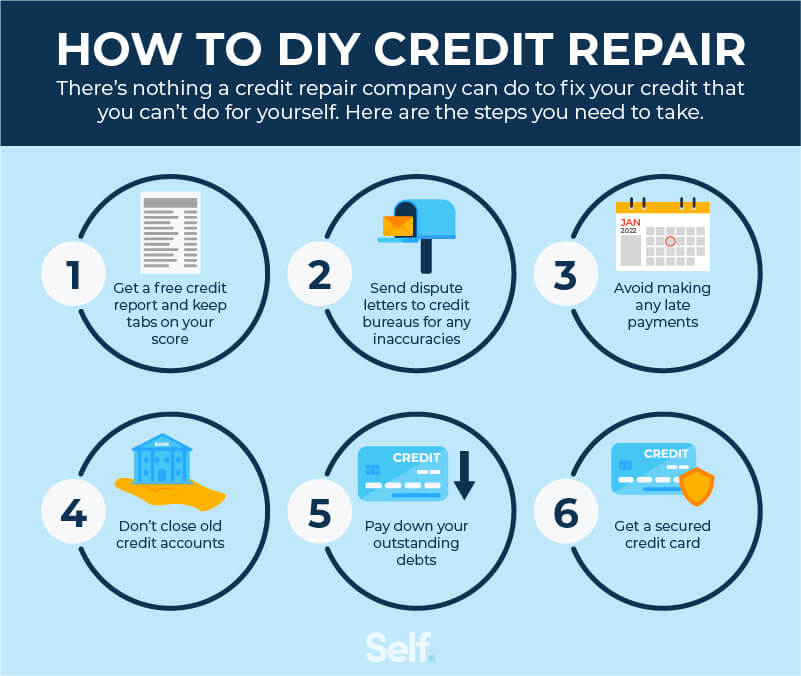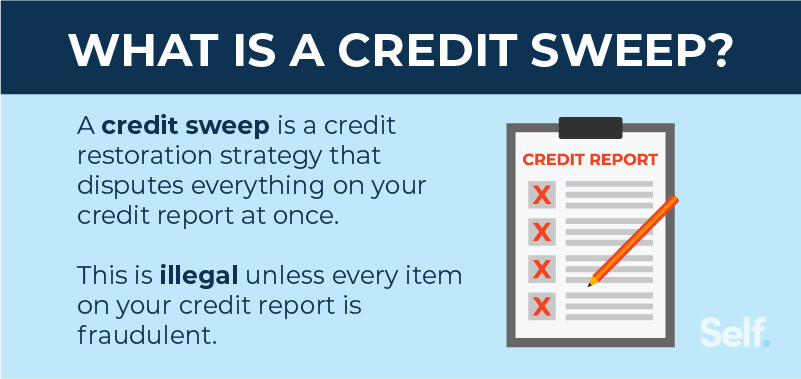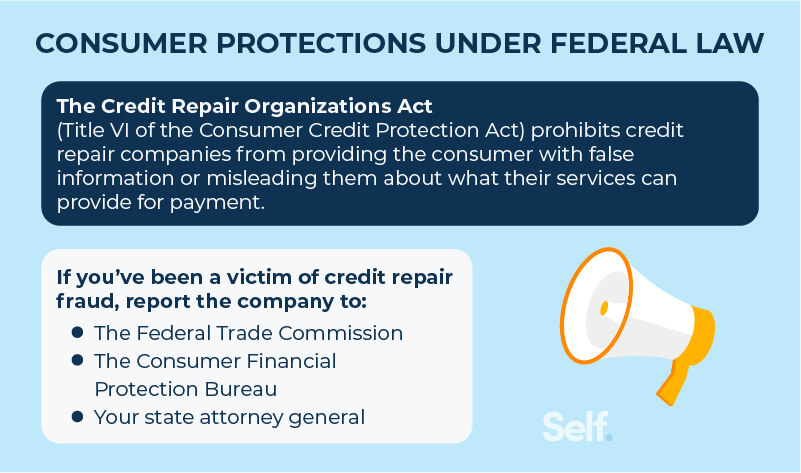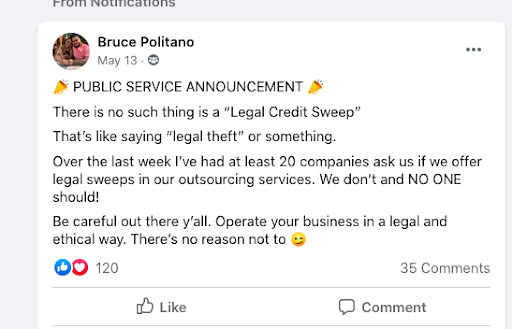Need to clean up your credit report? Look no further! In this article, you will discover valuable tips and tricks on how to perform a credit sweep yourself. Say goodbye to expensive credit repair services and take matters into your own hands. With our step-by-step guide, you’ll learn how to identify errors, dispute inaccuracies, and improve your credit score, all from the comfort of your own home. Get ready to take control of your financial future and unlock a world of possibilities. Let’s get started on your credit sweep journey!

Understanding Credit Sweep
Defining credit sweep
A credit sweep refers to the process of identifying and correcting errors, inaccuracies, or fraudulent activities on your credit reports. It involves reviewing your credit reports from the three major credit bureaus (Experian, Equifax, and TransUnion), disputing any incorrect information, and working towards improving your credit standing. By conducting a credit sweep, you can potentially increase your credit score and open doors to better financial opportunities.
How a credit sweep works
The process of a credit sweep involves several steps. First, you gather all the necessary documents, such as your credit reports, bank statements, and any documentation that supports your claims. Next, you thoroughly review your credit reports to identify any errors, such as inaccurate personal information, accounts that don’t belong to you, or incorrect payment history. Once you’ve identified the errors, you proceed to dispute them with the credit bureaus by submitting a formal dispute letter. This letter should clearly state the errors and provide supporting evidence to back up your claims. Finally, you monitor your credit reports to ensure that the corrections have been made and maintain good credit habits to sustain a positive credit standing.
Why you might need a credit sweep
There are several reasons why you might need a credit sweep. Firstly, errors on your credit reports can negatively impact your credit score and hinder your ability to secure loans, credit cards, or even favorable terms on insurance premiums. By conducting a credit sweep, you can correct these errors and improve your creditworthiness. Additionally, if you have been a victim of identity theft or fraudulent activities, a credit sweep can help you identify and resolve these issues, protecting your financial wellbeing. Lastly, a credit sweep can be beneficial before significant financial milestones, such as applying for a mortgage or starting a business, as it helps ensure that your credit reports accurately reflect your financial history.
The Legalities of Credit Sweep
The difference between legal and illegal credit sweeps
It is essential to understand the distinction between legal and illegal credit sweeps to protect yourself from potential legal consequences. A legal credit sweep involves disputing genuine errors or inaccurate information on your credit reports. It is perfectly within your rights to challenge these discrepancies and pursue corrections. On the other hand, illegal credit sweeps involve attempting to remove accurate negative information, such as legitimate late payments or bankruptcies, from your credit reports. Engaging in illegal credit sweeps can lead to severe penalties, including fines and even criminal charges.
Understanding the Fair Credit Reporting Act
The Fair Credit Reporting Act (FCRA) is a federal law that regulates how credit bureaus collect, report, and use consumer credit information. It also grants consumers the right to dispute inaccurate items on their credit reports and obligates the credit bureaus to investigate these disputes. Familiarize yourself with the FCRA to understand your rights and ensure that you follow the proper procedures when conducting a credit sweep.
Potential legal consequences of an illegal credit sweep
Engaging in an illegal credit sweep can have severe legal ramifications. Credit bureaus have mechanisms in place to detect and deter fraudulent activities, and attempting to manipulate your credit reports unlawfully can result in both civil and criminal penalties. Civil consequences may include monetary fines, while criminal penalties can lead to imprisonment. It is crucial to approach credit sweep ethically and within the boundaries of the law to avoid detrimental legal repercussions.
Preparing for a Credit Sweep
Gathering necessary documents
Before embarking on a credit sweep, it is essential to gather all the necessary documents. These may include recent copies of your credit reports from the three major credit bureaus, as well as any supporting documentation such as bank statements, payment receipts, or correspondence with creditors. Having these documents readily available will facilitate a smooth and efficient credit sweep process.
Reviewing your credit reports
Thoroughly reviewing your credit reports is a crucial step in the credit sweep process. Carefully examine each section, including personal information, accounts, payment history, inquiries, and public records. Look for inaccuracies, incorrect information, or any signs of fraudulent activity. Take note of any discrepancies you find and collect any evidence, such as statements or receipts, that support your claims.
Identifying incorrect information
During the review of your credit reports, it is important to identify any incorrect information. This may include accounts that are unfamiliar to you, erroneous payment history, incorrect balances, or outdated personal information. By identifying and documenting these errors, you can effectively dispute them with the credit bureaus and work towards their removal from your credit reports.
Disputing Errors on Your Credit Reports
Steps to dispute errors
Disputing errors on your credit reports involves several steps. First, you need to gather the necessary documentation to support your dispute. This may include copies of your credit reports, relevant statements or receipts, and any correspondence with creditors. Once you have the supporting evidence, you can proceed to draft a formal dispute letter to the credit bureaus, clearly outlining the errors and providing the substantiating documents. Send this letter via certified mail with a return receipt to ensure that it is received and trackable.
Writing a dispute letter
When writing a dispute letter, it is important to be concise, clear, and polite. Clearly state the errors you have identified and provide a detailed explanation of why you believe they are incorrect. Attach copies of any supporting documentation that backs up your claims, ensuring that you keep the originals for your records. Avoid using aggressive or confrontational language in your letter, as maintaining a friendly and professional tone will help in achieving a positive outcome.
Preparing for potential pushback from credit bureaus
It is not uncommon to face pushback from the credit bureaus during the dispute process. They may request additional information or attempt to verify the accuracy of the disputed items. Be prepared to provide any necessary supporting documents promptly and cooperate with the investigation. It can also be helpful to maintain detailed records of all communications with the credit bureaus, including dates, times, and the names of the representatives you interact with. This will ensure that you have a thorough record of the dispute process and can refer back to it if needed.

Getting Help with Credit Sweep
Where to find legitimate help
If you find the credit sweep process overwhelming or complex, you may consider seeking legitimate help. Reliable sources of assistance include nonprofit credit counseling organizations, consumer protection agencies, or reputable credit repair companies. These entities can provide guidance, support, and expertise in navigating the credit sweep process, ensuring that your rights as a consumer are protected.
Hiring a lawyer for credit disputes
In more complex cases or when dealing with significant legal issues, you may benefit from hiring a lawyer specializing in credit disputes. A lawyer can provide valuable legal advice, review your situation thoroughly, and develop a strategy to resolve the credit discrepancies effectively. They can also represent you in legal proceedings, if necessary, and ensure that your rights are protected throughout the credit sweep process.
Understanding the roles of credit repair agencies
Credit repair agencies can be valuable resources in the credit sweep journey. These agencies work on your behalf to dispute erroneous information, negotiate with creditors, or provide guidance on improving your credit standing. However, it is crucial to research and select a reputable and legitimate credit repair agency. Ensure that they comply with the law and do not engage in any illegal practices, such as promising to remove accurate negative information from your credit reports.
Monitoring Your Credit
Setting up credit monitoring
Once you have conducted a credit sweep and resolved any errors, it is important to set up credit monitoring to maintain awareness of any future changes or potential issues with your credit reports. You can sign up for credit monitoring services provided by credit bureaus or third-party service providers. These services offer regular monitoring of your credit reports and provide alerts if any new accounts, inquiries, or negative information appear on your reports.
Understanding changes in your credit
By monitoring your credit reports, you will be able to understand and track any changes in your credit. This includes new accounts opened in your name, changes in payment history, or the appearance of negative information. Regularly reviewing your credit reports will allow you to identify and address potential problems promptly, ensuring the accuracy and integrity of your credit history.
Maintaining good credit post-sweep
Once you have completed a credit sweep and resolved any errors, it is essential to maintain good credit habits to sustain a positive credit standing. Timely payment of bills, keeping credit card balances low, and avoiding excessive credit inquiries are all effective ways to improve and maintain good credit. By making responsible financial decisions, you minimize the risk of future errors or negative information appearing on your credit reports.

Maintaining Your Credit Post-Sweep
Tips for good credit habits
Maintaining good credit habits is crucial to a healthy credit standing. Some tips for maintaining good credit post-sweep include making timely bill payments, keeping credit card balances low, and avoiding unnecessary credit inquiries. Additionally, it is advisable to monitor your credit reports regularly and immediately address any inaccuracies or potential issues to prevent them from negatively impacting your credit.
Keeping track of your credit score and reports
To effectively maintain your credit post-sweep, keep track of your credit score and reports. Monitor your credit score regularly, particularly if you plan to apply for new credit. By staying aware of your credit score, you can take proactive steps to improve it if necessary. Additionally, continue to review your credit reports periodically to ensure their accuracy and identify any potential errors that may arise.
How a credit sweep affects your future credit
A credit sweep can have significant impacts on your future credit. By successfully disputing and removing inaccurate or fraudulent information, you can potentially increase your credit score and improve your creditworthiness. This, in turn, can lead to better financial opportunities, such as easier access to loans, lower interest rates, and more favorable terms. However, it is important to note that a credit sweep may not immediately repair all credit-related issues. Building and maintaining good credit habits post-sweep are essential for long-term credit health.
Potential Issues and How to Handle Them
Dealing with pushback from credit bureaus
During the credit sweep process, you may encounter pushback from the credit bureaus. They may request additional information or reject your dispute claims. If you face resistance or believe that the credit bureaus have mishandled your dispute, you can escalate the matter by filing a complaint with the Consumer Financial Protection Bureau (CFPB). The CFPB will investigate your complaint and work towards resolving any issues or disputes between you and the credit bureaus.
Handling a decline in credit score
While a credit sweep is intended to improve your credit, there is a possibility of a temporary decline in your credit score. This can occur due to the removal of inaccurate positive information or the discovery of previously unreported negative information. If your credit score decreases post-sweep, do not panic. Continue practicing good credit habits, such as making timely payments and keeping credit card balances low. Over time, your credit score will recover and potentially improve beyond its previous level.
Resolving disputes you can’t resolve on your own
In some instances, you may encounter disputes or issues that you are unable to resolve on your own, despite following the proper procedures. If this happens, consider seeking legal assistance or consulting with a reputable credit repair agency. These professionals can provide guidance and support in resolving more complex disputes and can help protect your rights as a consumer.

The Impact of a Credit Sweep
How a credit sweep can improve your financial situation
A successful credit sweep can have a significant positive impact on your financial situation. By removing inaccuracies or fraudulent information from your credit reports, you can increase your credit score and enhance your creditworthiness. This can lead to more favorable terms on loans, credit cards, and insurance premiums, ultimately saving you money. Additionally, an improved credit standing can provide peace of mind and open doors to better financial opportunities.
Potential risks and downsides of a credit sweep
Despite the potential benefits of a credit sweep, there are some risks and downsides to consider. Conducting a credit sweep requires time, effort, and attention to detail. It may also involve facing pushback from credit bureaus or other parties involved in the dispute process. Additionally, there is a possibility of a temporary decline in your credit score as a result of the credit sweep. It is important to weigh these potential downsides against the potential benefits before proceeding with a credit sweep.
Long-term impacts of a credit sweep on your credit reports
The impact of a credit sweep on your credit reports can be long-lasting. By correcting errors and removing inaccurate information, you can potentially improve your credit reports permanently. However, it is crucial to maintain good credit habits post-sweep to ensure that your credit reports remain accurate and positive. Regularly monitoring your credit reports and promptly addressing any issues that arise will help sustain the positive impact of the credit sweep in the long run.
The Importance of Continuous Credit Monitoring
Pros of constant credit monitoring
Continuous credit monitoring offers several advantages. Firstly, it allows you to stay informed about any changes or potential issues with your credit reports. By receiving alerts in real-time, you can take immediate action to rectify any inaccuracies or respond to any fraudulent activities. Additionally, continuous credit monitoring provides you with a comprehensive understanding of your credit health, empowering you to make informed financial decisions and achieve your long-term financial goals.
Potential downsides of not monitoring your credit
Not monitoring your credit leaves you vulnerable to potential errors, inaccuracies, or fraudulent activities that may go unnoticed. Without credit monitoring, you may miss opportunities to identify and rectify these issues promptly, resulting in negative consequences for your credit standing and financial wellbeing. It is essential to proactively monitor your credit to prevent any potential damage and ensure the accuracy and integrity of your credit reports.
How often to check your credit reports
To maintain effective credit monitoring, it is recommended to check your credit reports at least once a year. You can obtain a free copy of your credit report from each of the three major credit bureaus once every 12 months. Additionally, consider signing up for credit monitoring services that provide regular updates and alerts. By monitoring your credit regularly, you can promptly address any issues and proactively protect your credit health.
In conclusion, understanding credit sweep is crucial for maintaining a healthy credit standing and protecting your financial wellbeing. By defining credit sweep, understanding its legalities and potential consequences, preparing adequately, disputing errors, seeking help when needed, and continuously monitoring your credit, you can navigate the credit sweep process successfully. Remember to practice good credit habits, promptly address any issues that arise, and prioritize the long-term maintenance of your credit. With a thorough understanding and proactive approach, you can achieve a positive credit standing and open doors to better financial opportunities.

